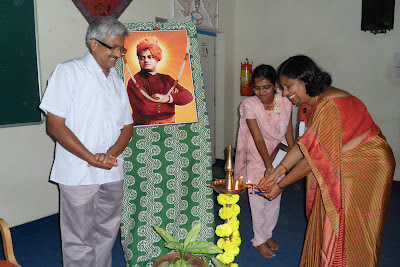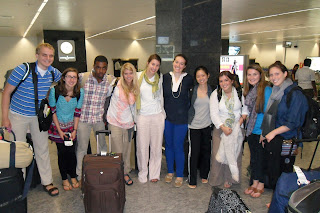By Karen, ILR'15
Discussion, notes, and learning most certainly doesn't stop at the Cornell campus. The first week of India has been filled with just that, both in and out of classrooms. All students have the pleasure of learning about Indian history and culture. Simply being in classes themselves have been a learning experience. While the requirement for students to sit straight with legs uncrossed initially seemed cold, strict and unwelcoming, the classroom experience has been just the opposite. The instructors all encouraged class participation and spoke with such passion on their subject matters.
Gender Relations in India has been an incredible class. For the most part, this class has been taught by a woman named Dr. Shanti. During our pre departure course, we learned about the possible cultural baggage we may bring from the United States on gender equality and relations. Not only has Shanti brought new perspectives and educated us on women in India, but has also demonstrated the real possibilities of women in India gaining political, personal, and societal space.
 |
| Dr. Shanti's Gender Course |
Another notable experience has been a discussion with Mr. Purushotham, a labor lawyer who represents employers and taught a few of our labor law class, and Mr. Sheshadri, a leader in the All Indian Trade Union Congress. The hammer and sickle on Mr. Sheshadri’s notebook did not deter the two leaders from becoming friends; instead the interaction demonstrated how management and workers have worked collaboratively to benefit business and uphold labor standards across India.
|
|
Professor Purushotham (L) and Mr. Sheshadri (R), the Mysore leader of the
All India Trade Union Congress.
|
 |
| Mr. Sheshadri chatting with ILR students during the tea break. |
Finally, students have been taking daily Kannada classes with Dr. Swamy, a gregarious speaker with a passion for teaching. His stories, enthusiasm, smile, and sometimes unconventional methods of teaching have all kept us on our toes and awake, even though his class is the last class of the day. Thanks to him, we are all equipped with some basic Kannada when we head off to our project sites!
Classes have been a great experience. We are eager to expand beyond the classroom to apply our skills and knowledge at our project sites!
|
|
Dr. Sumanth leading a field trip to a local primary healthcare center.
|
 |
| Abby ILR'15 demonstrating the high-tech biometric time clock for staff at the center. |

























